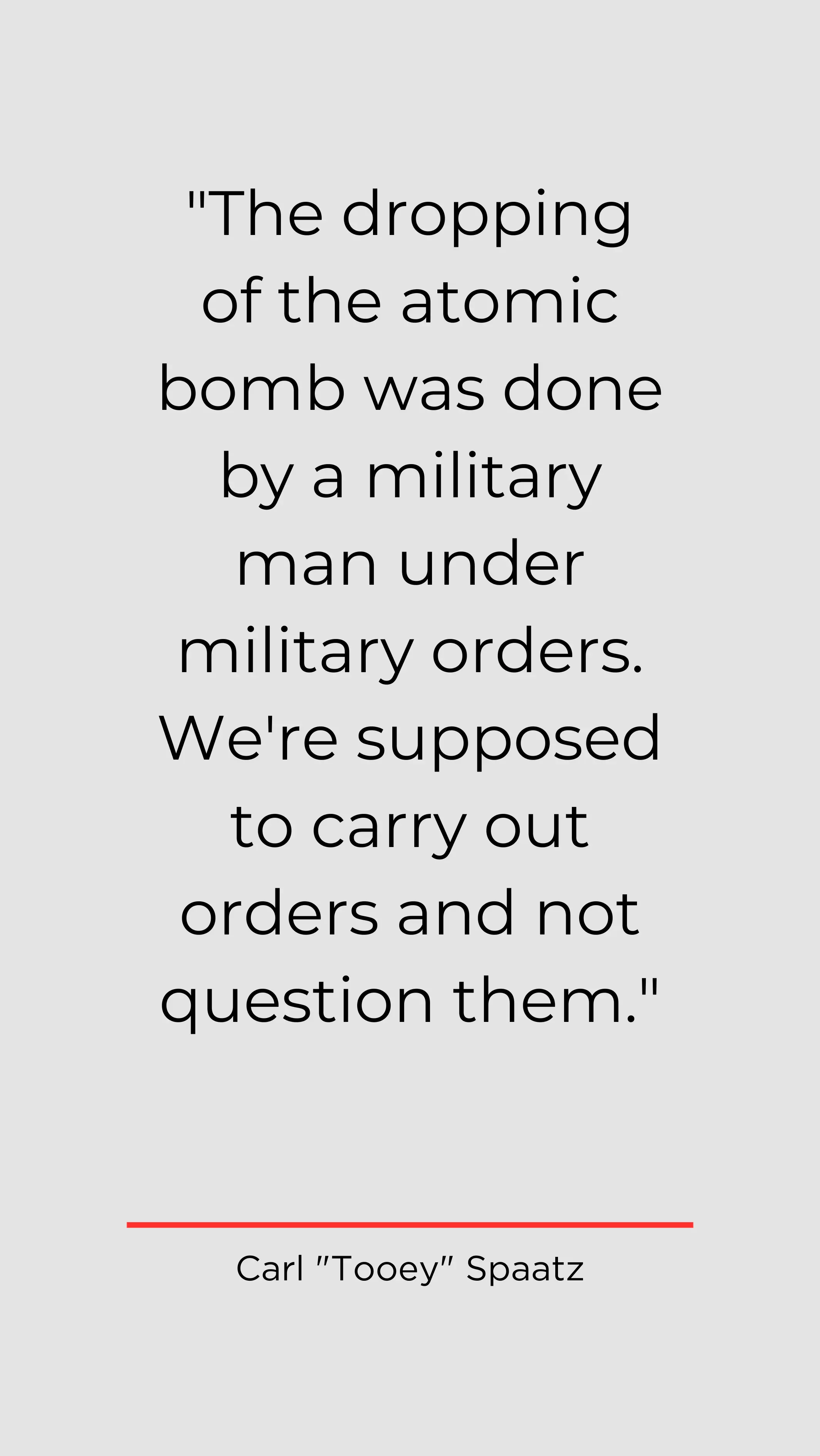Carl Andrew “Tooey” Spaatz, born on June 28, 1891, in Boyertown, Pennsylvania, was a pioneering aviator and military leader who played a pivotal role in the development of the United States Air Force.
Early Life and Aviation Enthusiasm
Carl Spaatz’s early life was marked by an enduring fascination with aviation that would shape his remarkable career. Born in 1891, Spaatz’s flight journey coincided with the Wright brothers’ pioneering of controlled powered flight, marking a historic era. Witnessing their historic flights left an indelible impression on young Spaatz, sparking a deep passion for aviation. This profound interest would go on to define his life’s work.
Eager to turn his passion into a profession, Spaatz joined the U.S. Army Signal Corps as an enlisted man, laying the foundation for his aviation career. It quickly became evident that he possessed a natural aptitude for all things aviation-related. His unwavering dedication and skill saw him swiftly ascend through the ranks, setting the stage for a groundbreaking journey. In 1916, Spaatz achieved a significant milestone by obtaining his pilot’s license, marking him as one of the earliest military aviators in the United States. This achievement marked the beginning of a remarkable career that would see him become a pioneering figure in the history of American aviation.
Carl “Tooey” Spaatz: World War I Service
Amid the tumultuous backdrop of World War I, Carl “Tooey” Spaatz emerged as a formidable figure in the skies. As a combat pilot in France, Spaatz exhibited unwavering dedication to his country and exceptional cockpit skills. During the war, he completed many successful missions, showcasing remarkable courage and expertise in challenging situations. World War I solidified Spaatz’s aviation skills and laid the foundation for his future leadership in military aviation.
World War I solidified Spaatz’s aviation reputation and laid the foundation for his future military leadership in aviation. Carl “Tooey” Spaatz’s combat experience shaped future American air power, establishing him as a pivotal figure in aviation history.
Between the Wars
In the turbulent interwar period, Carl “Tooey” Spaatz’s journey through the world of aviation continued to ascend. As the dust of World War I settled, Spaatz found himself at the forefront of a burgeoning field. He was not content to rest on his laurels; instead, he became a pivotal figure in the development of airpower doctrine and strategy. Spaatz possessed a visionary understanding of the potential of air warfare as a transformative force in modern military operations. His keen insights into the strategic implications of aviation marked him as a forward thinker in an era marked by rapid technological advancements.
Spaatz’s contributions to shaping the future of military aviation were far-reaching. His efforts laid the groundwork for integrating airpower into broader military strategies, recognizing the pivotal role that aircraft would play in future conflicts. This visionary approach would prove instrumental in the years to come, as air warfare evolved into an indispensable component of modern military operations. Carl “Tooey” Spaatz’s legacy in advancing the field of aviation during the interwar years remains a testament to his foresight and dedication to the ever-evolving world of military technology.
Carl “Tooey” Spaatz: World War II Leadership
As the tumultuous clouds of World War II gathered on the horizon, Carl “Tooey” Spaatz emerged as a central figure in the Allied effort. His pivotal role began with his appointment as the commander of the U.S. Army Air Forces in the European Theater, a position that would see him take the helm of one of the most critical aspects of the war effort. In this capacity, Spaatz oversaw the strategic bombing campaign against Nazi Germany, a campaign that would prove instrumental in the eventual Allied victory in Europe. His leadership was characterized by a blend of strategic acumen and innovative tactics, guiding the U.S. Army Air Forces to new heights of effectiveness and impact.
Spaatz’s tenure as commander witnessed the evolution of air warfare on an unprecedented scale. His ability to adapt to the dynamic nature of the conflict and devise novel strategies was instrumental in the success of the air war. Under his leadership, the U.S. Army Air Forces played a crucial role in weakening Germany’s industrial and military infrastructure, paving the way for the eventual defeat of the Axis powers. Carl “Tooey” Spaatz’s WWII leadership solidified his legendary status in military aviation, marking a pivotal chapter in air warfare history.
Atomic Bombing of Japan
Carl “Tooey” Spaatz’s pivotal role in World War II extended to the Pacific Theater, where his leadership took on a historic significance. As the commander of the U.S. Strategic Air Forces in the Pacific, Spaatz was at the forefront of one of the most momentous and controversial events in modern history—the dropping of atomic bombs on Hiroshima and Nagasaki. Under his command, the U.S. Strategic Air Forces executed the missions that delivered these devastating blows, ultimately hastening the end of World War II in the Pacific.
Atomic weapons altered warfare profoundly. Spaatz’s role in this decision highlights his immense responsibility during these critical moments. Debate surrounds atomic bomb use, but Spaatz’s leadership and mission execution undeniably led to Japan’s surrender, ending a brutal conflict. Carl “Tooey” Spaatz’s role in this event underscores wartime leaders’ complexities, moral dilemmas, and his lasting military historical impact.
Carl “Tooey” Spaatz: First Chief of Staff of the U.S. Air Force
In the wake of World War II and the subsequent reorganization of the United States military, Carl “Tooey” Spaatz assumed a pivotal role as the first Chief of Staff of the U.S. Air Force in 1947. This appointment marked a historic moment in the evolution of the American armed forces. This signified the emergence of the United States Air Force as an independent service branch. Spaatz’s leadership was instrumental in shaping the trajectory of the newly formed Air Force. He organized and developed the nascent branch, setting the stage for its future prominence as a dominant military force.
During his tenure as the first Chief of Staff of the U.S. Air Force, Spaatz navigated the challenges of post-war demobilization, technological advancements, and the changing geopolitical landscape. His strategic vision and stewardship readied the Air Force for Cold War and post-Cold War challenges, ensuring strong positioning. Spaatz’s early Air Force contributions solidified his legacy in American military aviation history, emphasizing air power’s vital role in defense.

Post-Military Career and Legacy
After retiring from the U.S. Air Force in 1948, Carl Spaatz remained influential in aviation and national defense. He remained a passionate advocate for the importance of air power and the role of strategic thinking in safeguarding the nation. Spaatz’s expertise and insights in advisory roles solidified his trustworthiness in military aviation and national security matters.
On July 14, 1974, the aviation world and the nation mourned the passing of Carl Spaatz. His legacy showcased unwavering dedication, innovation, and exceptional leadership in military aviation, spanning a lifetime of achievements. Spaatz’s enduring impact can be seen in the continued prominence of the U.S. Air Force and the vital role airpower plays in contemporary military operations. His name embodies aviation excellence, inspiring future aviators and defense leaders for generations with enduring contributions. Carl Spaatz’s legacy underscores the lasting impact of visionary leadership on a field, highlighting the influence of a single individual.





Very good information. Lucky me I recently found your blog by accident (stumbleupon).
I’ve saved it for later!
Hi there, You have done an incredible job. I will certainly digg it
and personally recommend to my friends. I am confident they’ll
be benefited from this website.